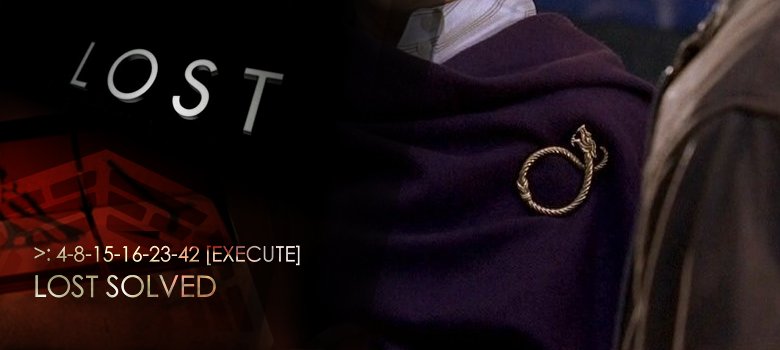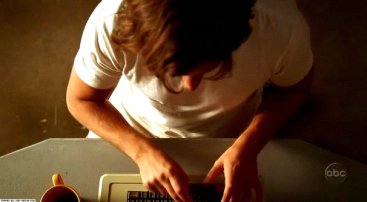
![]()
The Ouroboros (or Uroborus) is an ancient symbol depicting a serpent or dragon eating its own tail. It comes from the Greek words oura meaning “tail” and bόros meaning “eating”, thus “he who eats the tail”.
 The Ouroboros often represents self-reflexivity or cyclicality, especially in the sense of something constantly re-creating itself, the eternal return, and other things perceived as cycles that begin anew as soon as they end (the mythical phoenix has a similar symbolism). It can also represent the idea of primordial unity related to something existing in or persisting before any beginning with such force or qualities it cannot be extinguished. The ouroboros has been important in religious and mythological symbolism, but has also been frequently used in alchemical illustrations, where it symbolizes the circular nature of the alchemist’s opus. It is also often associated with Gnosticism, and Hermeticism.
The Ouroboros often represents self-reflexivity or cyclicality, especially in the sense of something constantly re-creating itself, the eternal return, and other things perceived as cycles that begin anew as soon as they end (the mythical phoenix has a similar symbolism). It can also represent the idea of primordial unity related to something existing in or persisting before any beginning with such force or qualities it cannot be extinguished. The ouroboros has been important in religious and mythological symbolism, but has also been frequently used in alchemical illustrations, where it symbolizes the circular nature of the alchemist’s opus. It is also often associated with Gnosticism, and Hermeticism.
Carl Jung interpreted the Ouroboros as having an archetypal significance to the human psyche. The Jungian psychologist Erich Neumann writes of it as a representation of the pre-ego “dawn state”, depicting the undifferentiated infancy experience of both mankind and the individual child.
Historical Representations
Egypt
The earliest known representation of the Ouroboros is contained in the Egyptian Book of the Netherworld. The Oroboros was popular after the Amarna period.
In the Book of the Dead, which was still current in the Graeco-Roman period, the self-begetting sun god Atum is said to have ascended from chaos-waters with the appearance of a snake, the animal renewing itself every morning, and the deceased wishes to turn into the shape of the snake Sato (“son of the earth”), the embodiment of Atum.
Greece
Plato described a self-eating, circular being as the first living thing in the universe—an immortal, mythologically constructed beast.
- The living being had no need of eyes when there was nothing remaining outside him to be seen; nor of ears when there was nothing to be heard; and there was no surrounding atmosphere to be breathed; nor would there have been any use of organs by the help of which he might receive his food or get rid of what he had already digested, since there was nothing which went from him or came into him: for there was nothing beside him. Of design he was created thus, his own waste providing his own food, and all that he did or suffered taking place in and by himself. For the Creator conceived that a being which was self-sufficient would be far more excellent than one which lacked anything; and, as he had no need to take anything or defend himself against any one, the Creator did not think it necessary to bestow upon him hands: nor had he any need of feet, nor of the whole apparatus of walking; but the movement suited to his spherical form was assigned to him, being of all the seven that which is most appropriate to mind and intelligence; and he was made to move in the same manner and on the same spot, within his own limits revolving in a circle. All the other six motions were taken away from him, and he was made not to partake of their deviations. And as this circular movement required no feet, the universe was created without legs and without feet.
In Gnosticism, this serpent symbolized eternity and the soul of the world.
Alchemy
 In alchemy, the Ouroboros is a sigil. Swiss psychologist Carl Jung saw the Ouroboros as an archetype and the basic mandala of alchemy. Jung also defined the relationship of the Ouroboros to alchemy:
In alchemy, the Ouroboros is a sigil. Swiss psychologist Carl Jung saw the Ouroboros as an archetype and the basic mandala of alchemy. Jung also defined the relationship of the Ouroboros to alchemy:
The alchemists, who in their own way knew more about the nature of the individuation process than we moderns do, expressed this paradox through the symbol of the Ouroboros, the snake that eats its own tail. The Ouroboros has been said to have a meaning of infinity or wholeness. In the age-old image of the Ouroboros lies the thought of devouring oneself and turning oneself into a circulatory process, for it was clear to the more astute alchemists that the prima materia of the art was man himself. The Ouroboros is a dramatic symbol for the integration and assimilation of the opposite, i.e. of the shadow. This ‘feed-back’ process is at the same time a symbol of immortality, since it is said of the Ouroboros that he slays himself and brings himself to life, fertilizes himself and gives birth to himself. He symbolizes the One, who proceeds from the clash of opposites, and he therefore constitutes the secret of the prima materia which […] unquestionably stems from man’s unconscious.
The famous Ouroboros drawing from the early alchemical text The Chrysopoeia of Cleopatra dating to 2nd century Alexandria encloses the words hen to pan, “one is the all”. Its black and white halves represent the Gnostic duality of existence. As such, the Ouroboros could be interpreted as the Western equivalent of the Taoist Yin-Yang symbol.
The Chrysopoeia Ouroboros of Cleopatra is one of the oldest images of the Ouroboros to be linked with the legendary opus of the Alchemists, the Philosopher’s Stone.
As a symbol of the eternal unity of all things, the cycle of birth and death from which the alchemist sought release and liberation, it was familiar to the alchemist/physician Sir Thomas Browne. In his A letter to a friend, a medical treatise full of case-histories and witty speculations upon the human condition, he wrote of it:
[…] that the first day should make the last, that the Tail of the Snake should return into its Mouth precisely at that time, and they should wind up upon the day of their Nativity, is indeed a remarkable Coincidence,
Allegoria della vita umana, by Guido Cagnacci (1601–63). The Ouroboros is visible in the upper left.
It is also alluded to at the conclusion of Browne’s The Garden of Cyrus (1658) as a symbol of the circular nature and Unity of the two Discourses:
All things began in order so shall they end, so shall they begin again according to the Ordainer of Order and the mystical mathematicks of the City of Heaven.
Freemasonry
The ouroboros is displayed on numerous Masonic seals, frontispieces and other imagery, especially during the 17th century.
Image Source | Image Source | Images Source
Associated LOST Characters

Eloise’s Pendant
3×08 – “Flashes Before Your Eyes”
Eloise brought Desmond outside in an attempt to persuade him that he cannot change his fate. She points out a man with red shoes, who is subsequently killed when scaffolding falls on top of him, killing him instantly.
She tells Desmond that if someone tries to forestall fate, the universe will “course correct” and find another way to lead back to the prescribed path. Eloise can be seen wearing an Ouroboros pendant while talking with Desmond. This pendant however did not have the serpent eating its own tail.
This symbol taken in context with the episode (and the characters featured) foreshadow the destruction of the Swan Station, Desmond’s symbolic and literal (getting hit in the head) connection to Sisyphus; and the eventual salvation and release from his perpetual “Sisyphean”/cyclic task of “pushing the button” every 108 minutes on the Island. Symbolic of the serpent eating its own tail.







You must be logged in to post a comment.